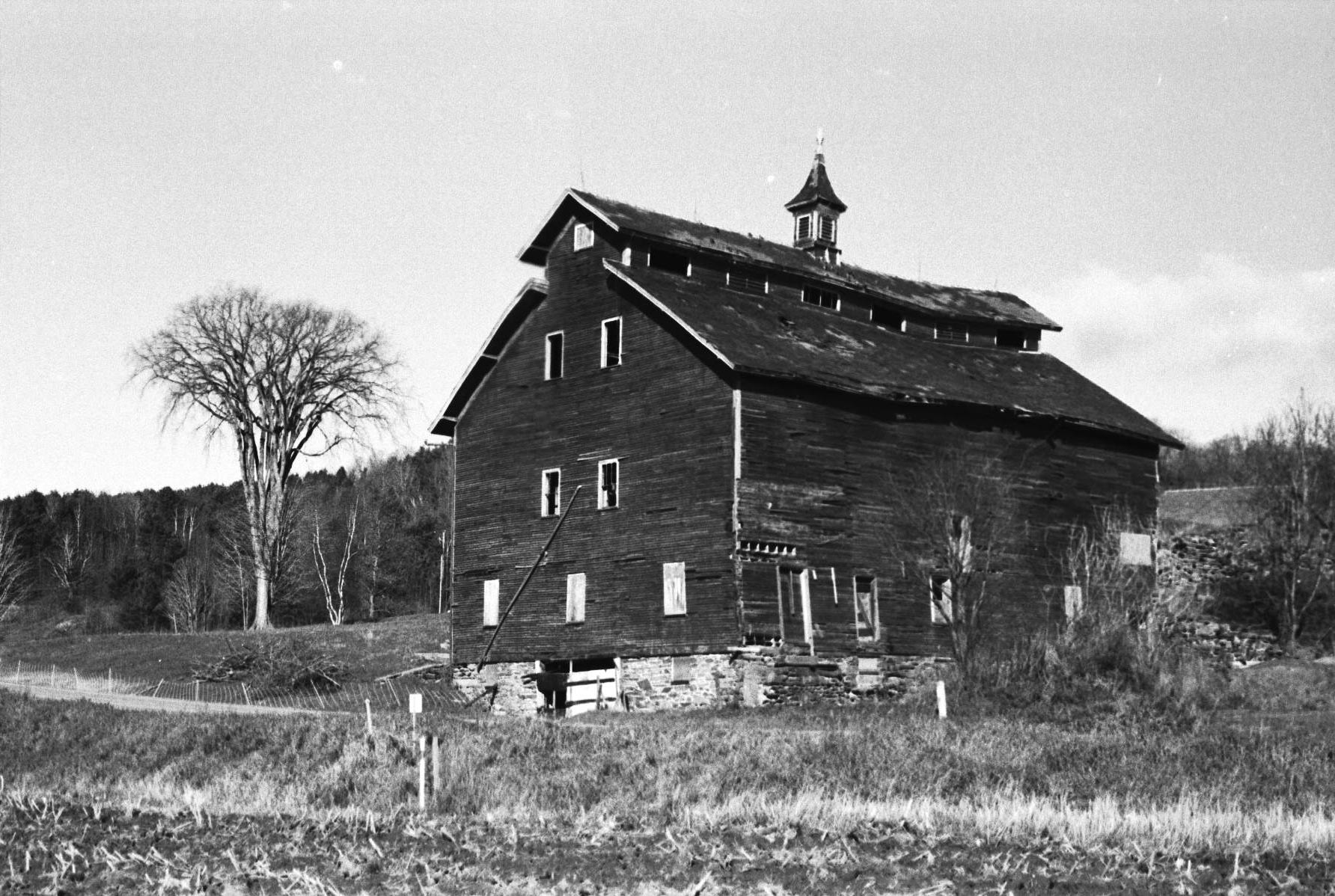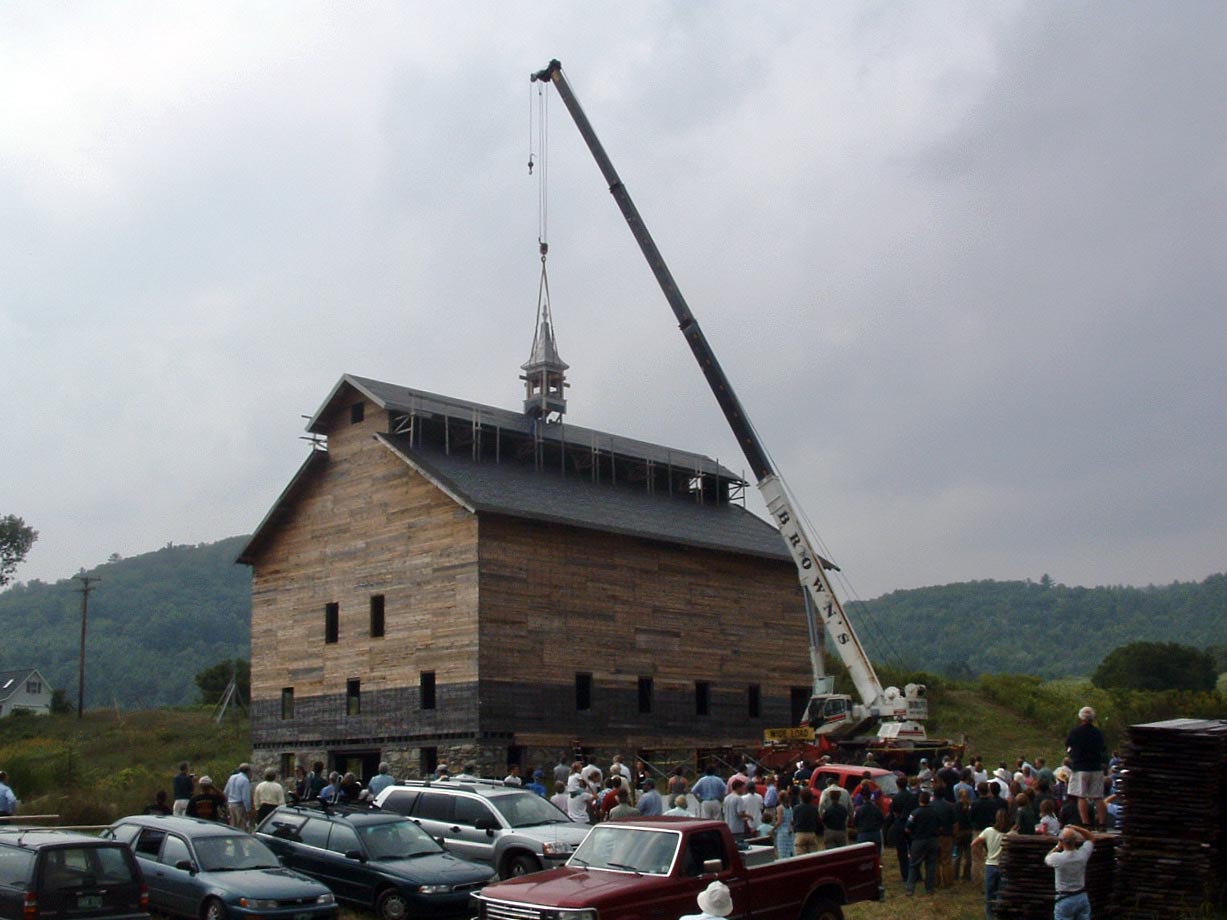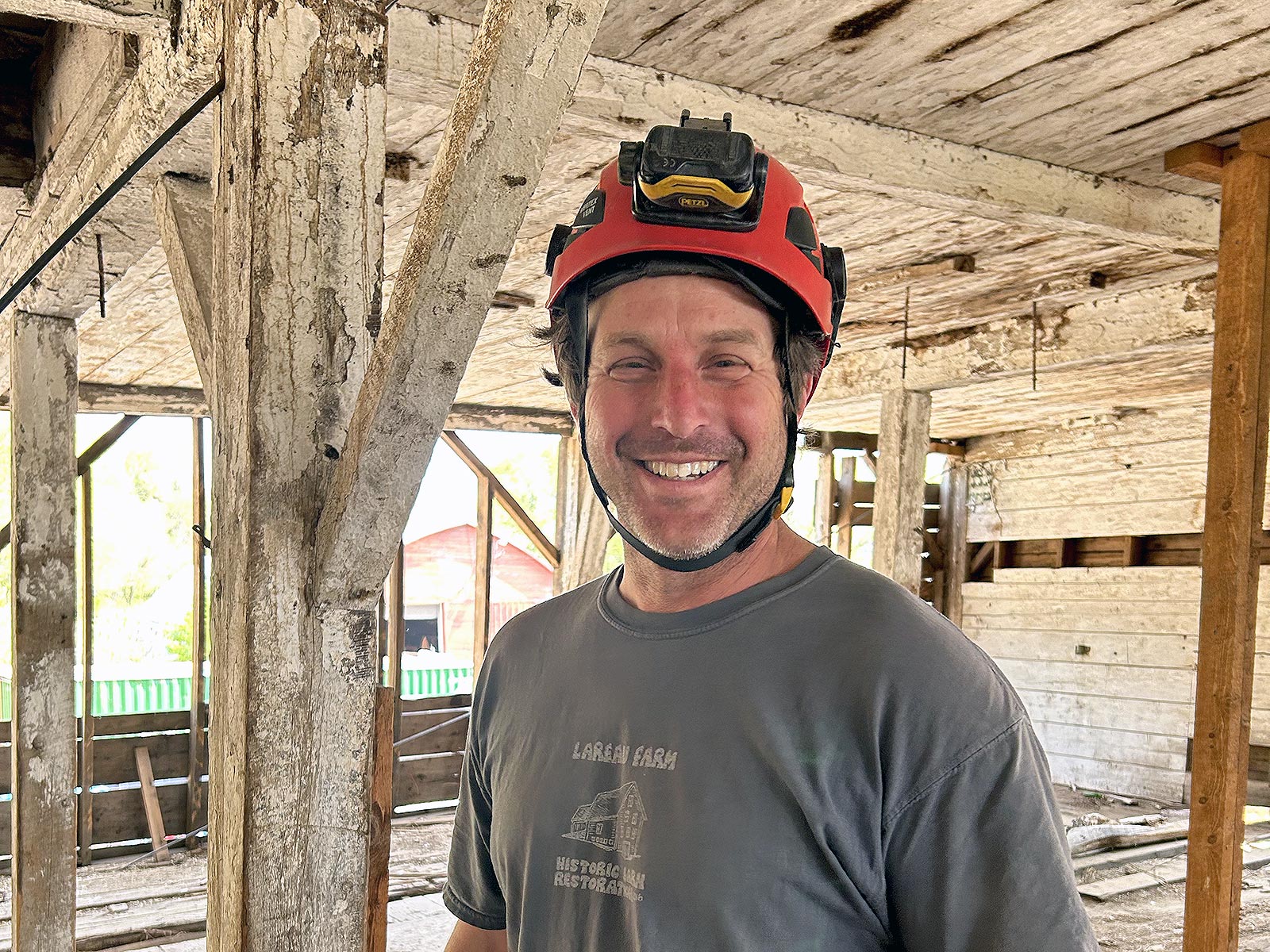“Luck is what happens when preparation meets opportunity.”
— Seneca
Every so often, you hear a life story so serendipitous that you almost can’t believe it’s real. Eliot Lothrop’s path to becoming the lead restorationist on the East Monitor Barn project is one such story, 20 years in the making. To fully appreciate how he landed in this role, let’s take a trip back in time.
The year was 2001. Eliot was a student at a pre-architecture program at Hobart College. He worked a job in New Hampshire at an architecture firm during school breaks, but the scope of the role didn’t amount to much more than “errand boy,” as he puts it. According to Eliot, “working in the architecture firm, I realized pretty quickly I didn’t actually want to be in a cubicle and going to the water cooler every hour. It just wasn’t a good fit.” So he cast a wider net and found historic preservation; he’d always been interested in old buildings and wanted to see where that path might lead.
In between undergraduate and graduate school, he attended a timber framing course in the Berkshires. In preparation to begin graduate studies at UVM, Eliot asked around at the course about who he should contact for a job in Vermont. Jan Lewandoski was the name that kept coming up. Apparently, Jan was regarded as a guru of Vermont’s old barns and covered bridges. Eliot filed that name away in his memory bank.
Eliot travelled to Vermont with his dog, Luther, to find a place to live before graduate school started. But he didn’t know much about the Burlington area and the housing market was “impossible,” especially with a dog (some things never change, it seems!) He checked bulletin boards, looking for farmers who would provide housing in exchange for help. He found some leads, but nothing panned out. “I was bummed,” Eliot told us. “I was going to drive back to New Hampshire with my tail between my legs because I didn’t find a place to live.”

This is where things really start to get good. On his way back to New Hampshire, he made a spontaneous decision to drive back on Route 2, rather than hopping on the interstate. In Richmond, he saw the Farm Bureau office on the side of the road, on the land that would later become (you guessed it) the Vermont Youth Conservation Corps campus. It was a Saturday, but Eliot stopped in on a whim. For some unknown reason the Director, Tim Buskey, was in the office. Eliot asked if they had a list of farmers looking for help in exchange for housing. “Tim said ‘no, but that building over there is going to be open in August, we’ll rent that to you.’ I said, ‘well how do you guys feel about dogs?’ He was like, ‘we love dogs!’” And that’s how Eliot came to move into the Milkhouse, where he lived for the next two and a half years! But that’s not the end of our story.
Eliot split his time between grad school and working for a timber framer in Jeffersonville. When November rolled around, he decided to give Jan Lewandoski a call. A lot of people called Jan for jobs and he was a busy guy, but Eliot was hopeful. Here’s how he describes what Jan said on that auspicious call: “‘That’s funny you should call and you live in Richmond. I actually have a barn to work on in Richmond: the [West] Monitor Barn.’ I was calling him from the Milkhouse, and I was like: ‘what’s a Monitor Barn?’ And he’s describing this thing to me, and I said, ‘I think I live in front of one of those.’ He asked if there was a pile of timbers out next to it and I said, ‘well yeah.’ And I hadn’t really realized it, but all the timbers to replace it were outside. And Jan said, ‘yeah, I’ll hire you.’”
So, Eliot not only ended up living on the property that would become the VYCC campus, but he also worked on the West Monitor Barn restoration just steps from his front door with the exact restorationist he’d been seeking out.

Eliot spent the winter working on the West Monitor Barn restoration project and frequently incorporated it into his research for his Master of Science in Historic Preservation. After an internship and roughly three years in the field mentoring others, he returned to the Monitor Barns in 2005 and talked the Farm Bureau into letting him do some initial stabilization work on the East Barn. That sparked Eliot’s dream to restore the East Monitor Barn in earnest. The tale is drawing to a close, but not without one final piece of serendipity.
Flash forward to 2023 when Eliot, with loads more experience than his younger grad student self is now the lead restorationist for our – and his – beloved East Monitor Barn! Vermont is special thanks to its community feel and the many ways that our lives intersect. Through hard work, skill, and a bit of good fortune, the project he’d been dreaming about for roughly 20 years is now one he’s leading. And we can’t think of a better person for the job. Eliot, we sure are glad you took Route 2 that fortuitous Saturday.
